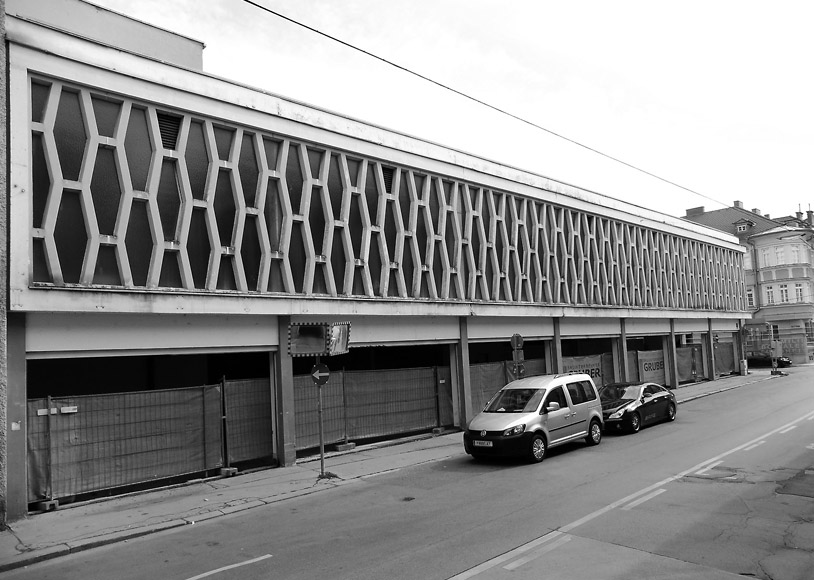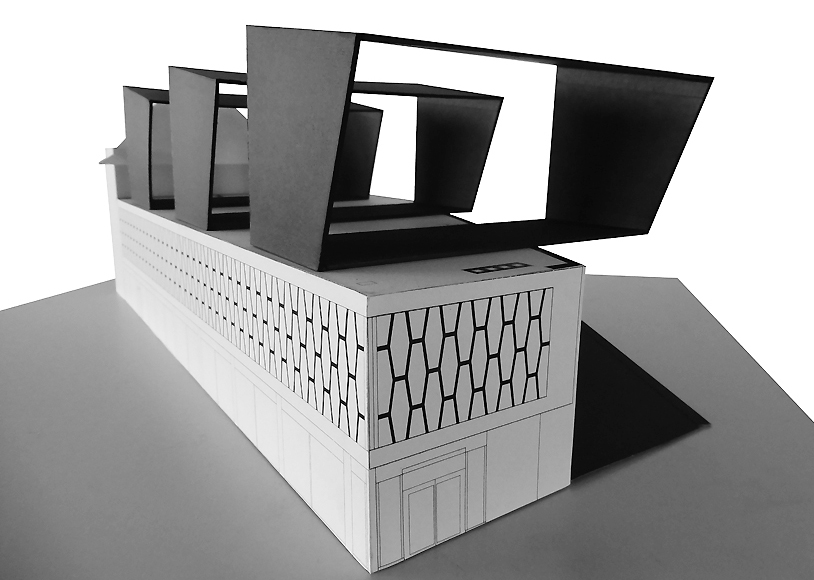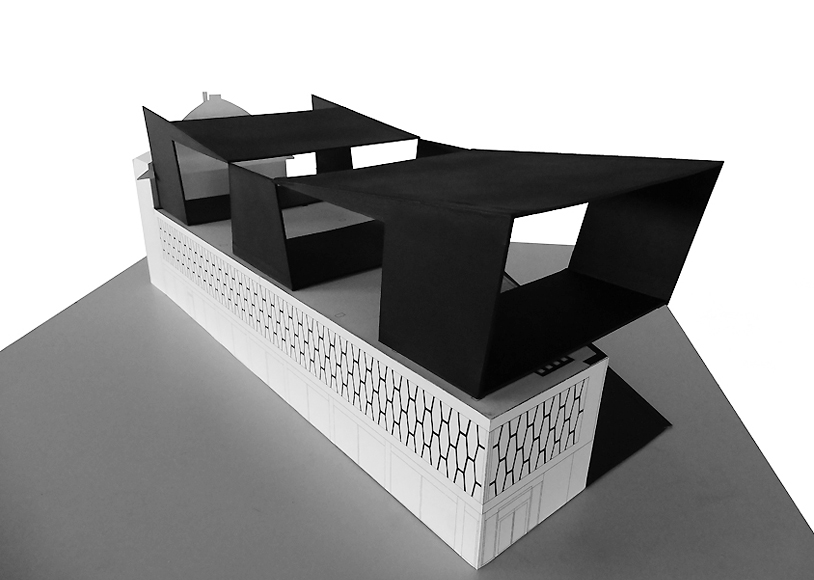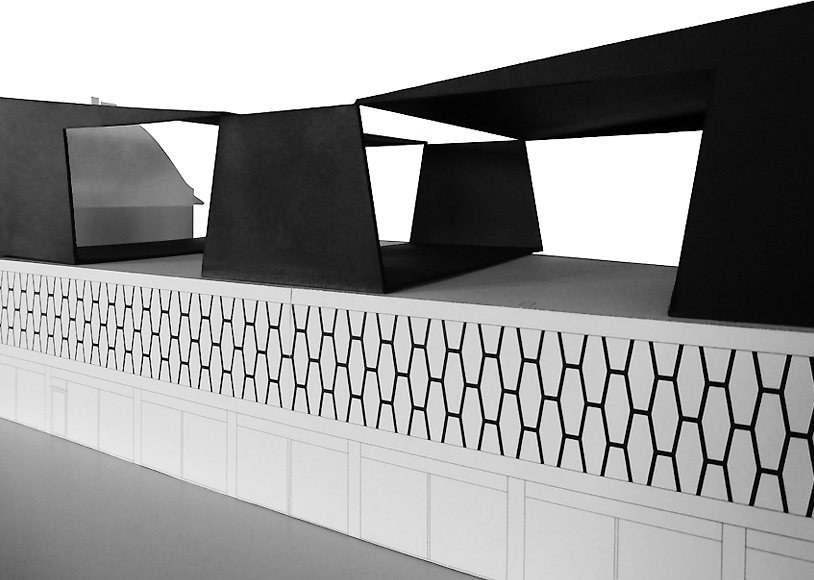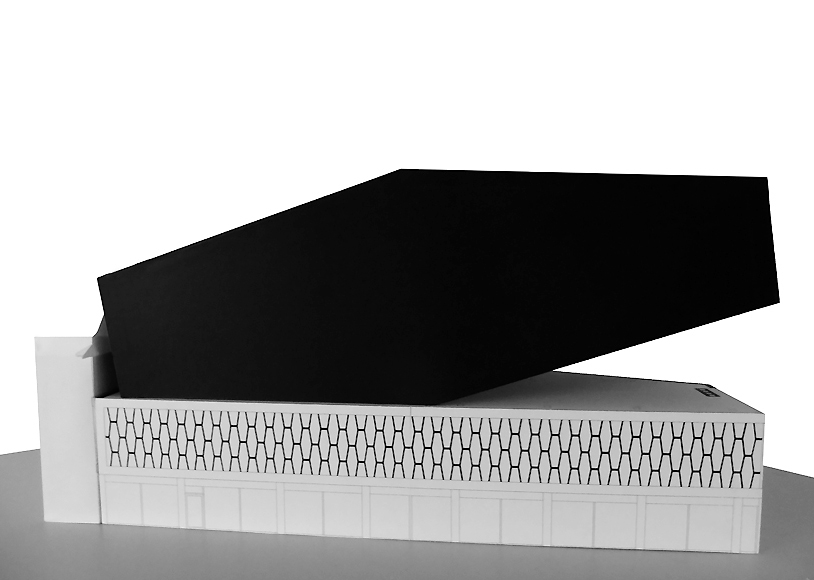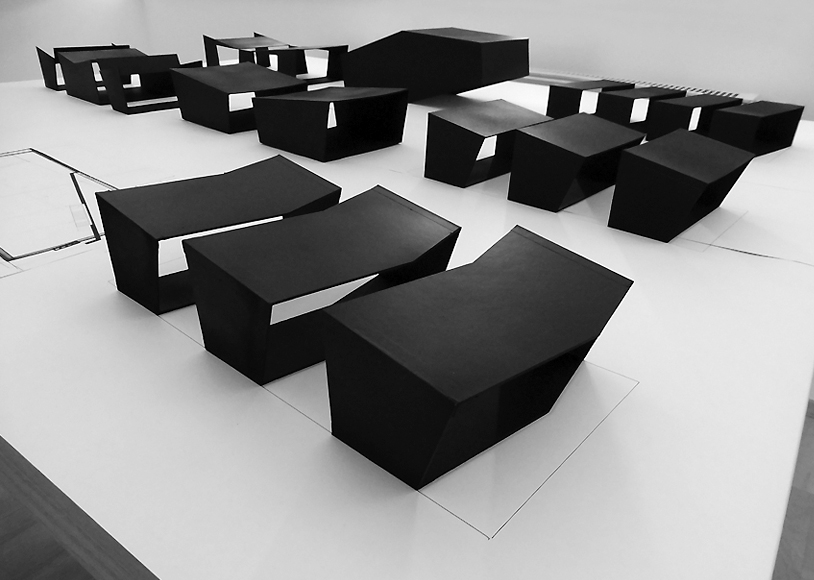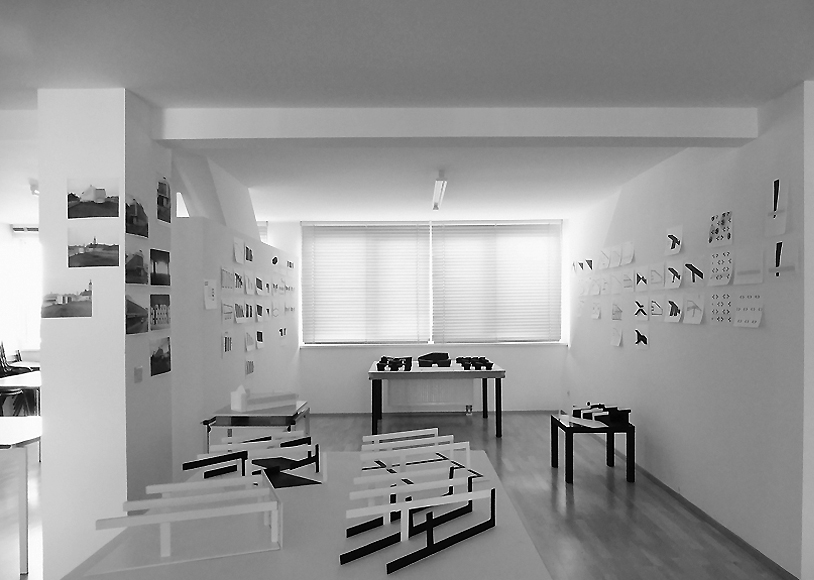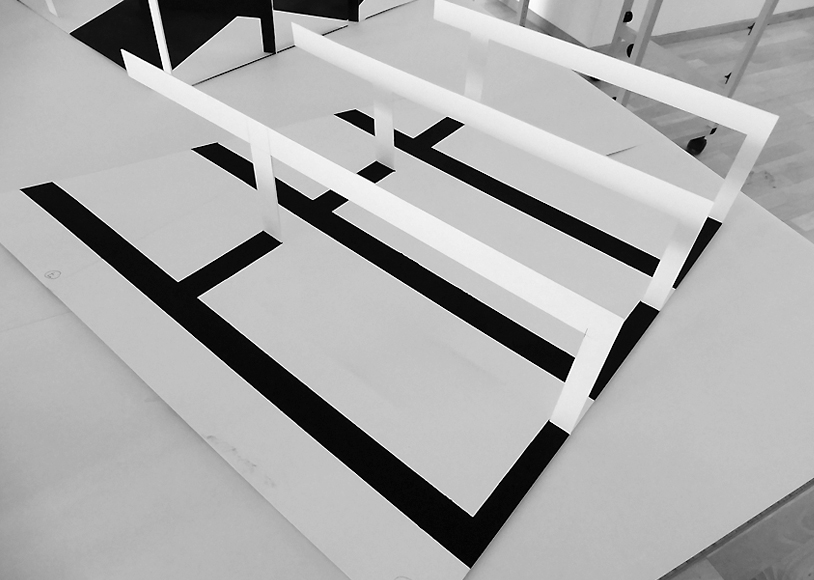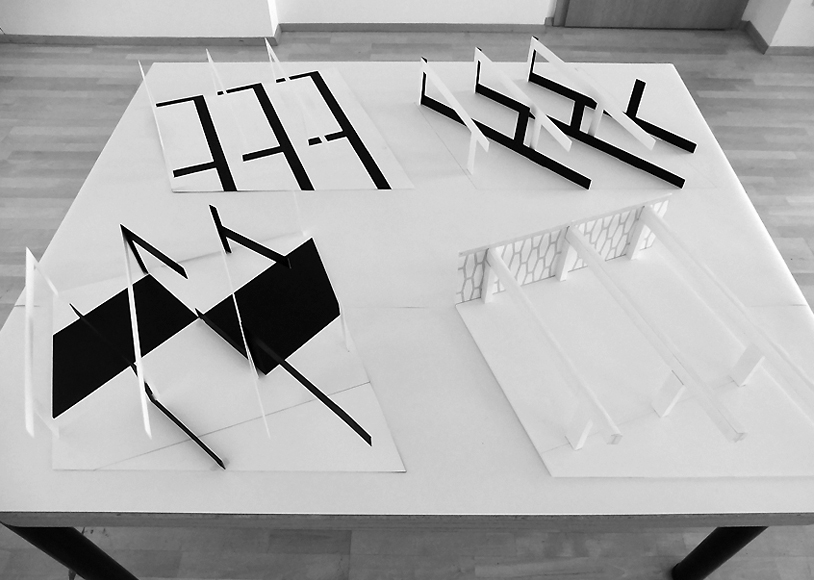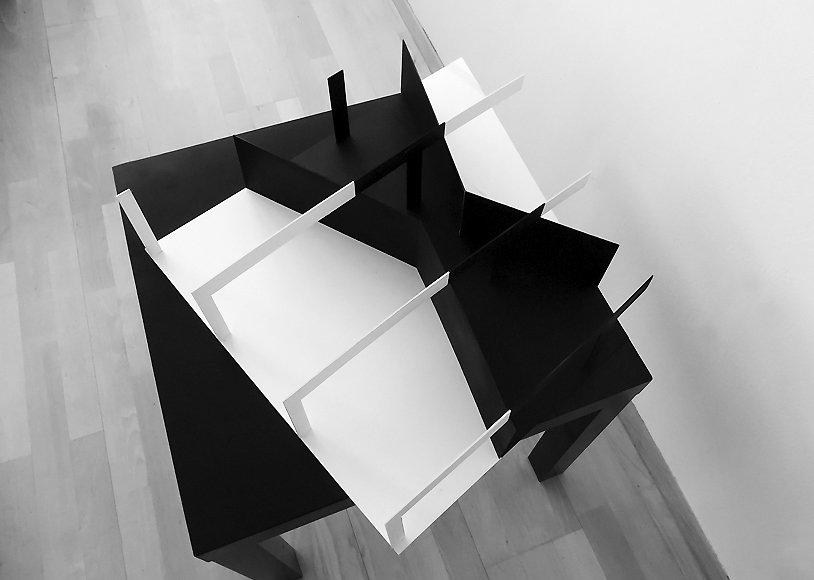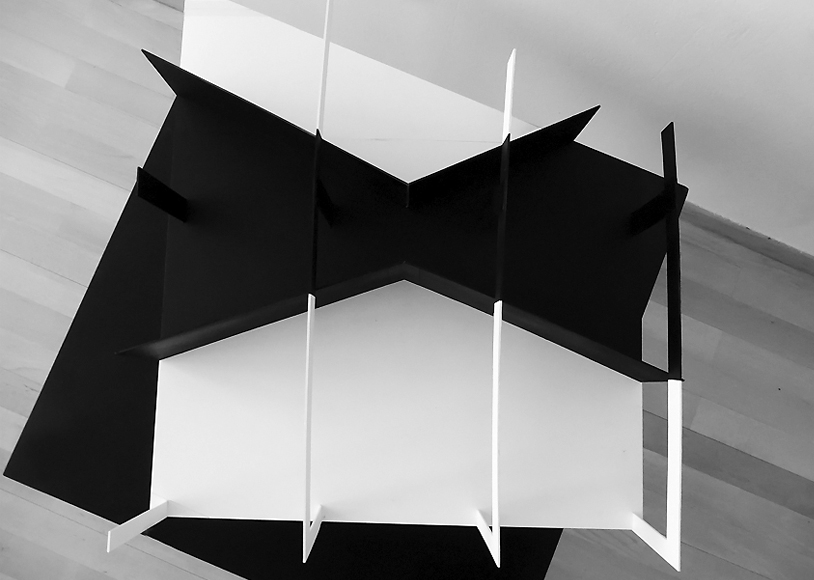Excerpt from the project study “Wesely-Haus.” The complete text can be found in the menu under texts.
On the initiative of the ORTE Architekturnetzwerk Niederösterreich and the owner of the property, during my AIR artist-in-residency in Krems I developed a project study for the "Wesely-Haus" in St. Pölten.
The former car dealership is a modern postwar building and can be classified in the context of visionary buildings built in the 1960s with façade elements with a cell-structure theme. The principle of the structural standardization of building components finds expression in its striking honeycomb façade. Considered critically, in the concrete case the honeycomb structure can also be referred to as a “decorative façade” that hides the reinforced concrete structure. The "Wesely-Haus" constitutes a striking structure that, as a perimeter development, develops sculptural force and from an architectural point of view can by all means be ranked as worthy of preservation. After various temporary uses, the building is currently vacant.
A key question is how preservation-worthy historical structures are to be dealt with. Can the architect’s original plan be modified, and if yes, to what extent? Because the building is part of public perception, beyond the factual ownership of the property the question should be asked of to whom the building “belongs” as an architectural and contemporary-historical monument.
In my project study I developed various possibilities for the spatial-constructive extension of the "Wesely-Haus" at the intersection between art and architecture. These can be implemented within different thematic focal points, as temporary and reversible installations, in and on the "Wesely-Haus". I also worked out a number of various approaches for the organization and structuring of the building’s individual stories. These can be further developed in a practical area as well as under the implementation of an art-in-architecture project. A collaboration between architect and artist is a possibility.
In my study, I worked out the following thematic focal points, which can only be suggested in the image sequences on this website: partitioning in the floor plan of the ”honeycomb level” (second floor), partitioning in the floor plan of the roof area, the addition of stories and the extension of the building, structure and construction of the partitioning motifs.

